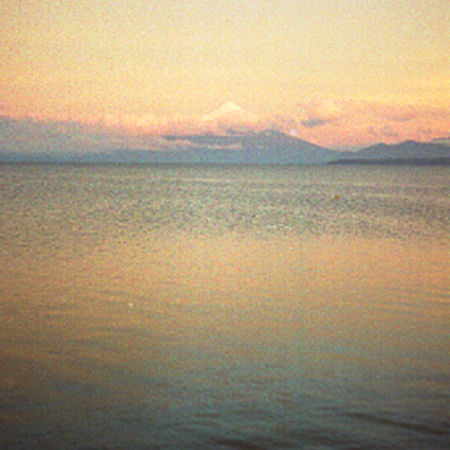
Ruka Pillan
Ruka Pillan
Photographic Project at Villarrica volcano, Chile. 2015
“Ruka Pillan”
2015
Proyecto fotográfico Volcán Villarrica, Chile.
“Ruka Pillan” es proyecto fotográfico realizado durante una residencia artística en Santiago de Chile y que tomé a orillas del volcán Villarrica, en la Auracania chilena.
Durante aquella residencia en Chile me sentí especialmente interesado por la cultura matriarcal Mapuche y su valiente resistencia a la Corona de España. Cabe resaltar que los Mapuche fueron unos de los pocos pueblos que no fueron subyugados por el Imperio Español.
En el lenguaje nativo de los Mapuche, pueblo precolombino que habitaba una vasta extensión de la Patagonia, ahora reducidos a la región del BIO BIO, el volcán Villarrica, era conocido como Ruka Pillan, cuya tradución sería “ La Morada de los de los espirítus de los antepasados” o “ Lugar donde descansan los ancestros”.
Dentro de la cosmogonía Mapuche, el volcan Villarrica y los espíritus que lo habitan cumplen un rol protagónico, su simbolismo está asociado con lo bueno, en oposición con el volcán Llaima que asocian con lo malo. Como resultado, el propicio Ruka Pillan inspira sueños beneficiosos y "buen clima", mientras que el Llaima transmite malos presagios. Según la leyenda, los Pillan son buenos espíritus, pero también pueden causar desastres, ya que también castigan o permiten que los “wekufe” castiguen con sequías o inundaciones, terremotos o enfermedades. Los Pillan o Püllüam son poderosos espiritus que rigen el “mongen” (vida) y ayudan a los vivos. Estos espíritus se comunican a través de las Machi por sueños “pewma” y también se manifiestan en la naturaleza de variadas formas.
Las manifestaciones del volcán Ruka Pillán han influido fuertemente en el mundo Mapuche a lo largo de su historia, puesto que sus señales significan hacer o no hacer algo. Los “Ngenpin” (dueños de la palabra) o las Machi son las encargadas de conectarse con el mundo espiritual y determinar que es lo que quieren transmitir los Pillan. Hasta tal punto llega su influencia que la erupción del volcán Ruka Pillan en febrero de 1640 sumado al vuelo de unas águilas reales y la forma de unas nubes que representaban una batalla en el cielo dio pie a que las Machi interpretáran que había que firmar la paz con los españoles, lo que se tradujo finalmente en el Tratado de Quillín celebrado el 5 y 6 de enero de 1641.
Fue precisamente esta cosmovisión propia de la cultura andina, en la que los fenómenos naturales están íntimamente ligados con lo mágico, los fenómenos míticos y la vida social lo que me llevó a realizar esta serie de fotografías a orillas de este magestuoso volcán.
***
“Ruka Pillan” is a photographic project carried out during an artistic residency in Santiago de Chile and which takes place on the edge of the Villarrica volcano, in the Chilean Auracania.
During that residency in Chile I felt especially interested in the Mapuche matriarchal culture and its valuable resistance to the Spanish Corona. It is worth noting that the Mapuche were one of the few pueblos that were not subdued by the Spanish Empire.
In the native language of Mapuche, a pre-Colombian village that inhabited a vast expanse of Patagonia, now reduced to the region of BIO BIO, the Villarrica volcano, was known as Ruka Pillan, whose translation would be “La Morada de los de los de los espiritus de los ancestors” or “Place where they rest ancestors.”
Within the Mapuche cosmogony, the Villarrica volcano and the spirits that its inhabitants fulfill a protagonist role, its symbolism is associated with the good, in opposition to the Llaima volcan that is associated with the evil one. As a result, the favorable Ruka Pillan inspires beneficial dreams and "good weather", while the Llaima conveys bad omens. According to the law, the Pillan are good spirits, but they can also cause disasters, which also punishes or allows “wekufe” to punish them with droughts or floods, earthquakes or illnesses. The Pillan or Püllüam are powerful spirits that rigen the “mongen” (life) and help the living. These spirits are communicated through las Machi by “pewma” bones and are also manifested in nature in various ways.
The manifestations of the Ruka Pillán volcano have strongly influenced the Mapuche world throughout its history, because its signs mean doing or not doing something. The “Ngenpin” (dueños de la palabra) or Machi are responsible for connecting with the spiritual world and determining what is what they want to transmit to Pillan. Until such a point arrives with its influence that the eruption of the Ruka Pillan volcano in February 1640 summed up in the flight of some real eagles and the form of some clouds that represented a battle in the sky of the ground which the Machi interpreted that had to establish peace with the Spanish, which is finally translated into the Treaty of Quillín celebrated on the 5th and 6th of January 1641.
It was precisely this cosmovision proper to Andean culture, in which natural phenomena are intimately linked with magic, mythical phenomena and social life, which led me to take this series of photographs on the shores of this majestic volcano.
Project Gallery








